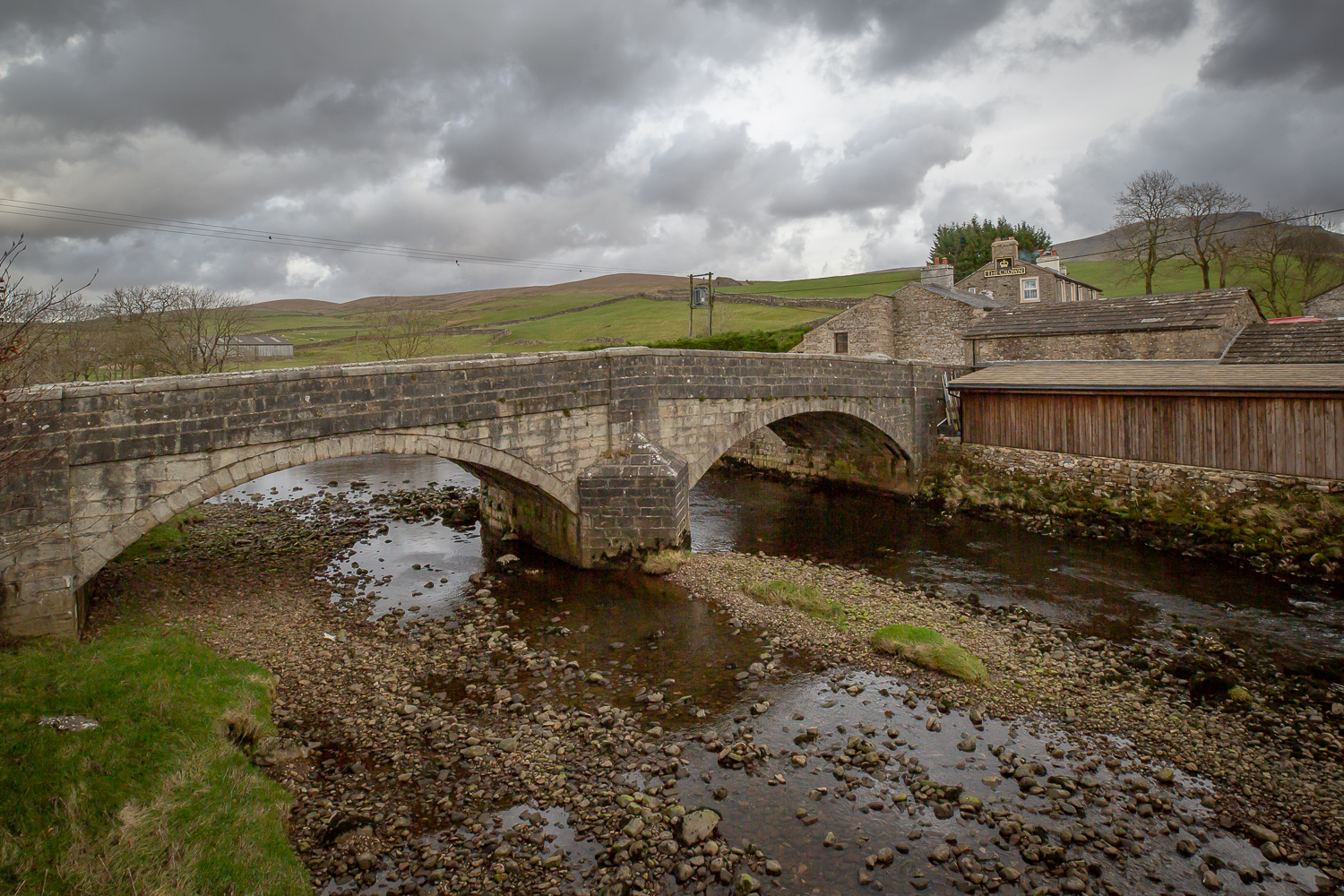A set of images showing the impact of people past and present on the environment in a small Dales village to the west of Pen-y-ghent
Taken over two days in February 2019, these images capture traces that humans have left in Horton-in-Ribblesdale. The traces, however, are more than just the result of human actions, as the surrounding landscape, has had a direct impact on the way people live, work and visit the village. The images, all taken with a wide angle lens, depict traces of human activity, but in the wider context of the landscape.
Many of the traces relate things that have been built by people (e.g. housing, the bridge, the church), whereas others relate to the working environment around the village (e.g. farming, and quarrying). Perhaps more visible reminders of people occur in the images with the gravestones and with footpath erosion, but the focus of these images is on the trace left behind rather than the people.
Horton was mentioned in the Doomsday book of 1086. The earliest building is the 12th Century Church of St Oswald. Much of the original Norman church still exists. The Tower was added in the 14th and 15th centuries. Pen-y-Gent can be seen in the background.

The centre of the village is on the river Ribble, which is the only river that starts in Yorkshire that flows to the west. The New Inn Bridge was built in the late 1700s and is a Grade II listed building. Today, the bridge is too narrow for pedestrians and traffic and a separate footbridge has been built.

On the route from Settle to Carlisle, Horton-in-Ribblesdale station opened to passengers in 1877. Today, passenger trains run approximately every two hours from Leeds to Settle. The trains climb an incline of 1 in 100 from Settle to Horton-in-Ribblesdale, and spectacular views await those on the journey. The station signs (also on an incline!) are almost overshadowed by the view of Pen-y-ghent in the background.

Next to the station and overlooking the village, Horton Quarry opened in the 1880s and limestone has been extracted up to the present day. The current owners, Hanson, believe that there is enough material for the next 70 years. After this, the site will be returned to grassland.

Both the Station and quarry affected the size of the village. Victorian terraces were built near the station, and later cottages for the Quarrymen. Viewed from the station village can be seen following the road ahead and round to the right.

In addition to quarrying, there are many hill farms in the region. This is a vital part of the local economy and also the appearance of the countryside surrounding the village. Without hill farmers and grazing livestock, the area would be mainly scrubland or woodland.

The countryside surrounding the village has a criss-cross of dry stone walls. There are estimated to be over 5000 miles of these walls in the Yorkshire Dales with some over 600 years old.

For many people, Horton-in-Ribblesdale is best known as the starting point and finishing point for The Three Peaks walk. The Pennine Way and Ribble Way also go through the village.

Public Footpath from Horton in Ribblesdale linking to one of the main routes to Pen-y-ghent
Pen-y-Ghent is a major attraction and footpaths are well worn. At busy times the village struggles to cope with the numbers of people. The National Parks Authority is looking at ways to alleviate the problems of coping with the thousands of visitors who participate in the Three Peaks Walks.

Many of these images have no reference to the 21st century and may evoke a sense of not being affected by the passage of time. I came away from this project with a sense of how the traces of people living, working and visiting this village are inextricably linked with the environment itself from the industrial quarry to the striking beauty of Pen-y-ghent. It will be interesting to see how people manage today’s challenges such as global warming and effect of increased tourism, both of which have the potential to have a high impact on the environment and affect the traces that people in the present leave for future generations.